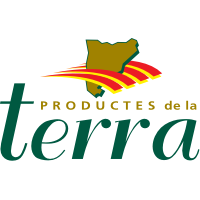Chestnut of Viladrau
There are few areas in Catalonia where there are forested areas of chestnut trees, Montseny is one of them. Chestnut is the fruit of the chestnut tree, castanea sativa.
In Montseny, two varieties of chestnut are distinguished. Some are called Martinenques, because they arrive through Sant Martí, and the others Sant Miquelenques, because they arrive through Sant Miquel. There is no difference between them in terms of size, color or taste. Inside the foil, the spiked outer skin, are about two or three chestnuts. The chestnut harvested in Viladrau and the surrounding villages, such as Espinelves, Arbúcies or Sant Hilari, is smaller in size and sweeter than the rest. Chestnut trees can be found within the area of influence of the Montseny Massif. In order to collect chestnuts and keep chestnut trees, permission must be requested from forest owners. The collection of the chestnut lasts throughout the month of October approximately. Chestnuts once harvested can be stored for a couple of weeks at most.
Season calendar
- GEN
- Feb
- Sea
- Apr
- Never
- JUN
- JUL
- AUG
- THIRST
- OCT
- nov
- From
Complementary information
The Romans brought chestnut trees to the peninsula. In Viladrau there are millennial specimens. In Arbúcies, Espinelves, and Viladrau throughout the decade of the 60s the activity of harvesting chestnuts was very important. The harvesters themselves also took them to the Mercat de Vic, Granollers, Manlleu, Torelló, Sant Celoni or directly to Barcelona. After a decline, the chestnut collection was revived in the 80s with the interest of schools to celebrate the Castanyada.
Attributes and nutritional properties
Collected in the depths of the Montseny Natural Park, located at a height of 900 meters, the Viladrau chestnuts have become the quintessential product of autumn in the area.
Viladrau chestnut is rich in carbohydrates and fiber. It has little fat, contains 50% water and half as many calories as other nuts. It is rich in proteins, vitamins and minerals and contains a large amount of potassium and little sodium, thus making it a healthy product with a totally natural conservation process in which only water is used, without any chemical product. This unique product, the star of Catalan gastronomy for more than three centuries, has led to the production of various varieties such as roasted chestnut, dehydrated chestnut, chestnut flour, chestnut flakes, chestnut bread or chestnut ice cream. The culinary uses of chestnut are increasingly varied and it is presented as an indispensable complement to autumn.








